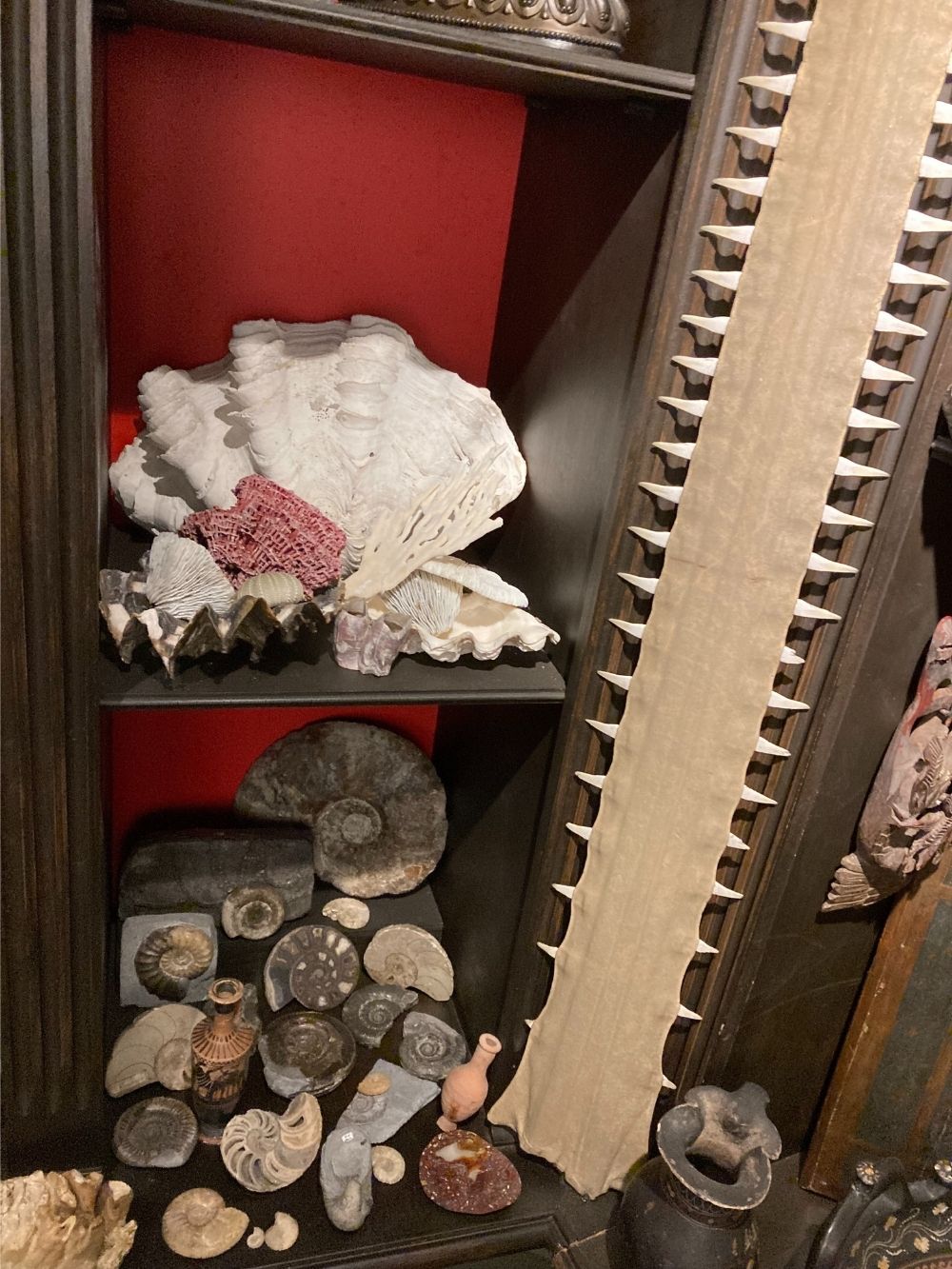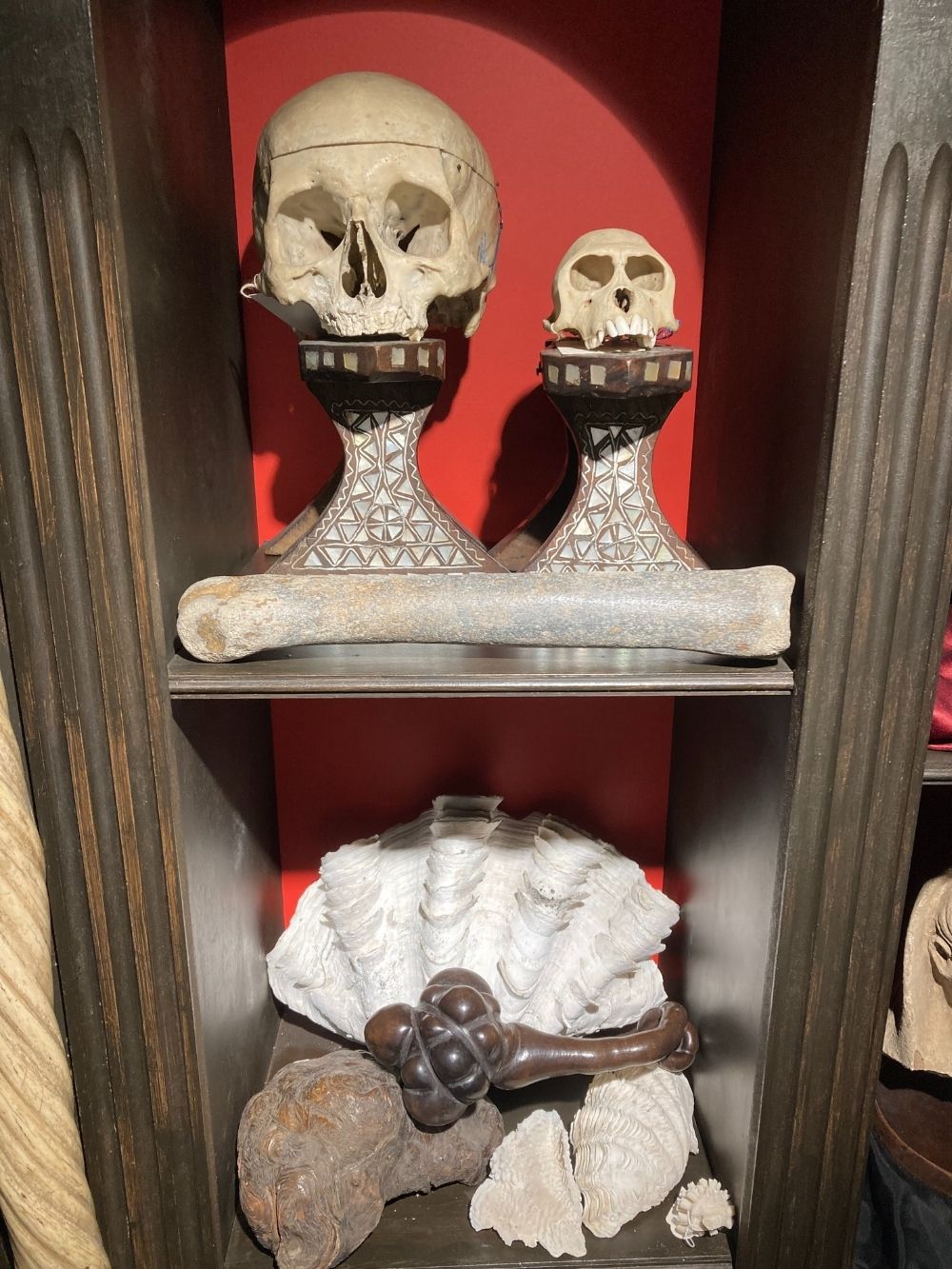
Read on to discover more about the fascinating history of cabinets of curiosity; the displays that delighted the early modern world and eventually led to the creation of museums, and learn more about Horsham museum's very own cabinet of curiosity.
Horsham Museum’s Cabinet of Curiosity has delighted visitors for decades, but it was centuries earlier that similar cabinets were delighting people across Europe. With the Age of Discovery came access to mysterious and unexplained phenomenon from across the globe, and collecting these wonderful objects and creatures became a popular hobby amongst the curious and eccentric, or the just plain wealthy.
Collections of curiosities date back to the 14th century and earlier, but it is around 1550 that the term “WunderKammer” first appeared in Germany, meaning “Chamber of marvels”. Rough translations of this appeared in most European languages and so in English they became known as Cabinets of Curiosities.
Referring to Cabinets of Curiosities as ‘cabinets’ may be a little misleading. They could vary in size from a vast room with a collection to match a small museum, to a small wooden cabinet with small objects and surprises hidden in draws and behind tiny doors. Often they were a small room, a bit like a walk-in closet.

The core purpose of Cabinets of Curiosities at this time was to accumulate fascinating and exotic objects and to identify them. By placing them together in one space a “Theatre of the world” could be created. Beyond this, the individual collector’s cabinets could vary wildly. Some were quiet places for solitude and the private study of the owner, to be seen only in glimpses through a crack in the door by anyone else, others would be grand displays of the magical and mysterious with which the collector would delight in bewildering every guest who visited.
The intention of these displays was not to explain the objects, but to leave the viewer with a sense that the world was a place full of mystery and wonder. The viewer could be presented with evidence of myth or magic and be left to come to their own conclusions.
Whilst every cabinet was different, there were some common items and themes that were often displayed in them. Exotic creatures were represented in metal casts, papier mâché or taxidermy. A crocodile was a prized specimen amongst collectors, along with other reptiles as well as birds and sea life. Corals, seashells and petrified wood were common additions. Dinosaur fossils, ‘unicorn horns’ (actually Narwhal Tusks) and deformed animal foetuses blurred the lines between myth and reality. This was often taken further by the creation of fakes like mermaid skeletons.

As time progressed the emphasis of collecting became more scientific, and collections that would once have been assembled into a cabinet of curiosity instead were presented in a way that we would recognise today as a museum. From the latter part of the 18th century public museums like the Ashmolean and British Museum were opening and the cabinet of curiosity had fallen out of fashion. They were not gone altogether though; one example is that of the curiosity shop, which persists to this day and has been represented in Dicken’s books and other stories.
Horsham Museum’s cabinet of curiosities resembles what one might have looked like in the 16th century, assembled with curious objects from our collection. Inside is Horsham museum’s famous mummified cat, pottery and sculpture brought back from grand tours, and objects of natural history like the narwhal tusk and the skeletons of other creatures. While the esoteric qualities of these objects are now known to be false, they still bring back a sense that the world is a vast and strange place, and that perhaps there is more to learn that what we already know.

Published: 20 Apr 2022
